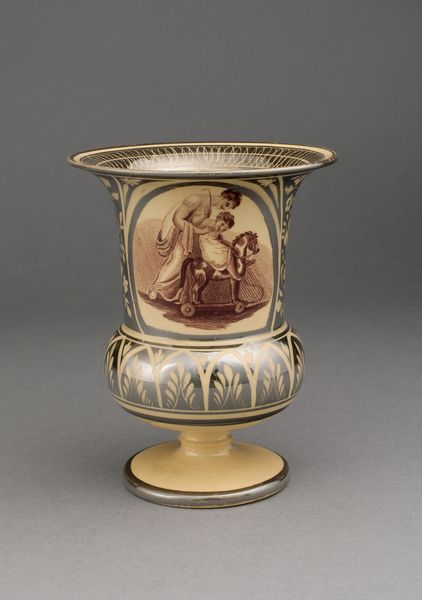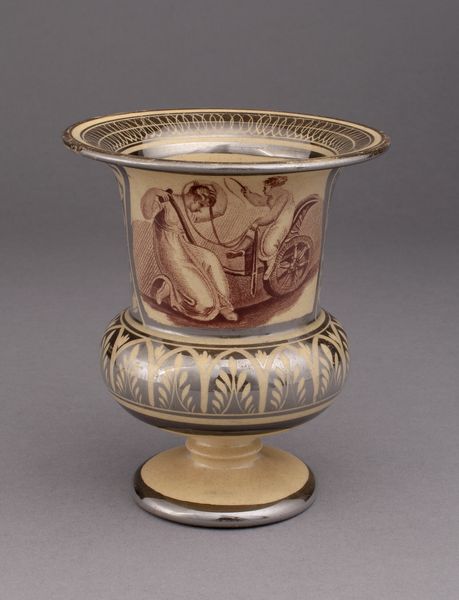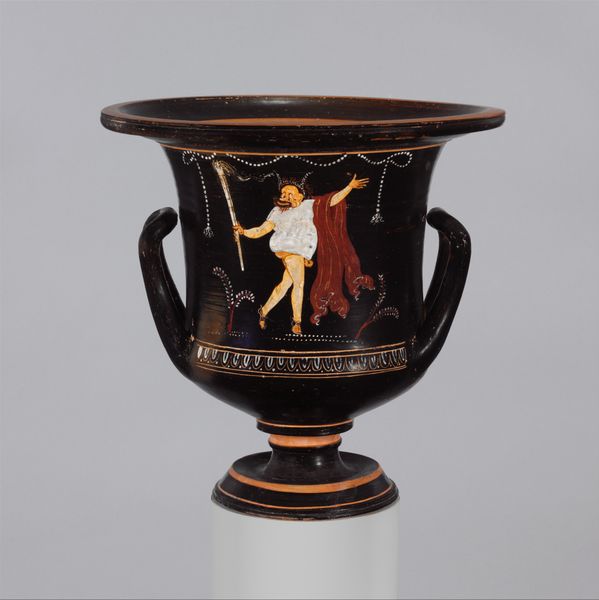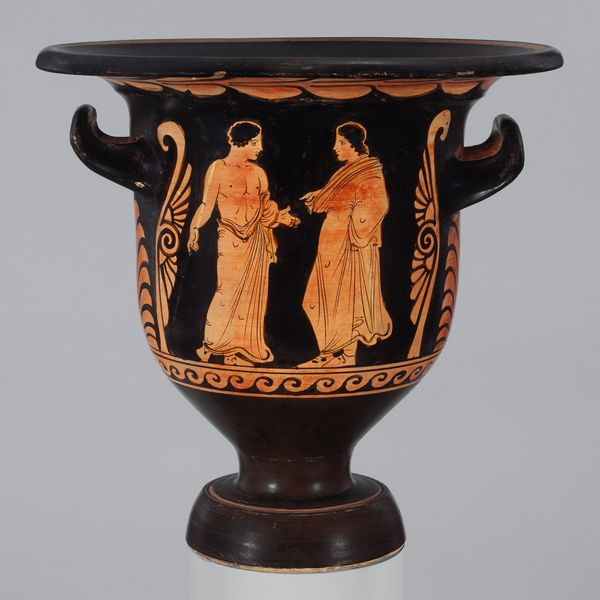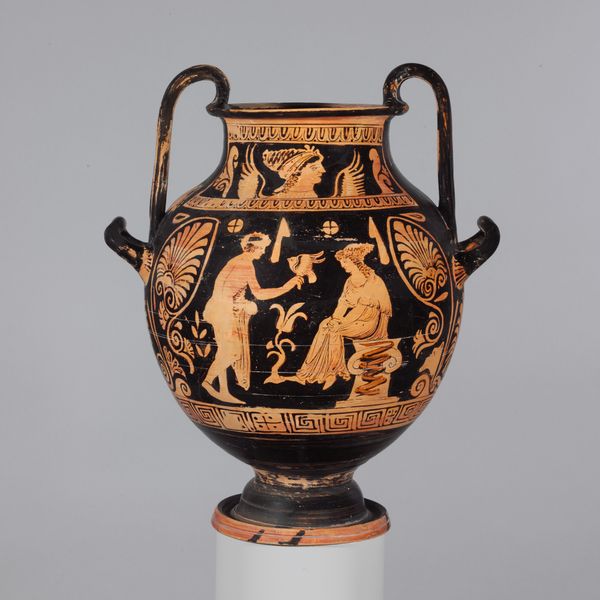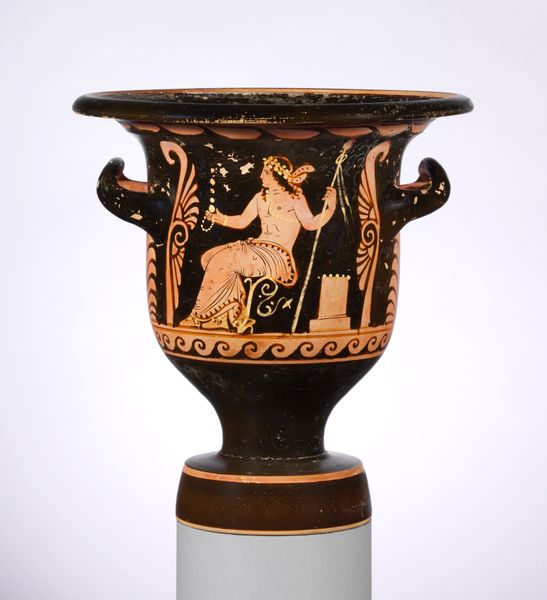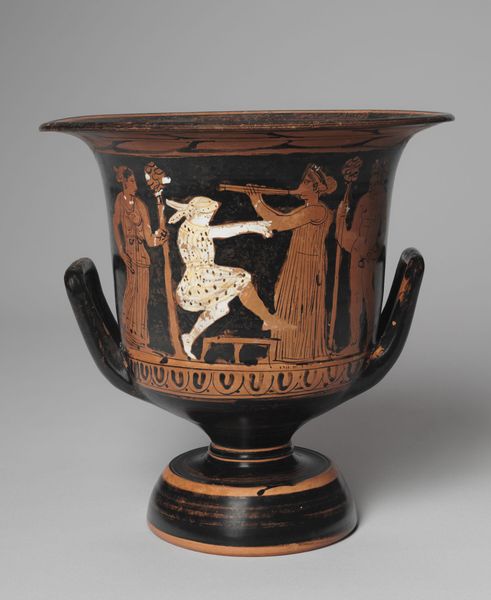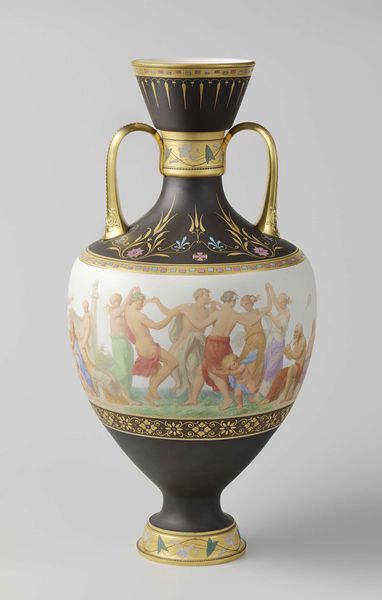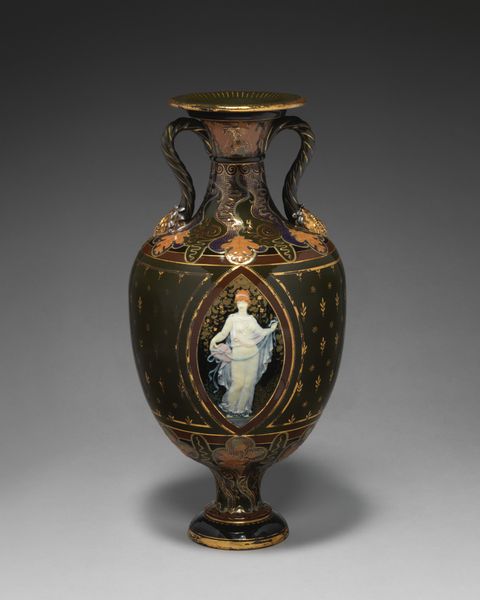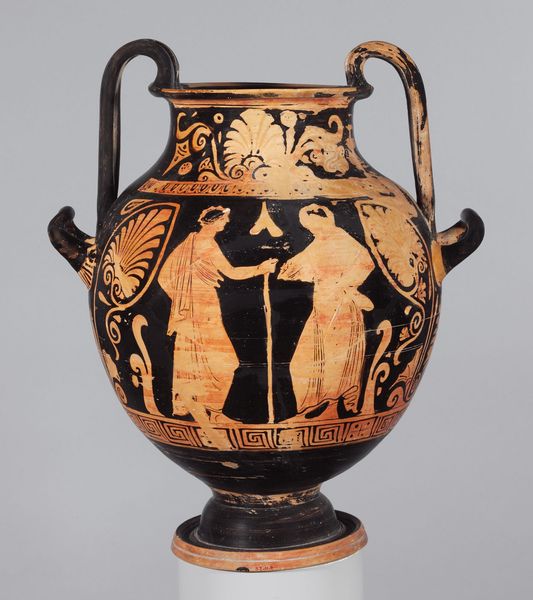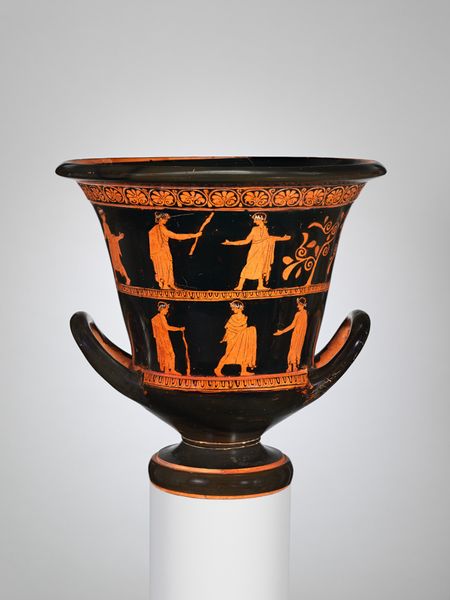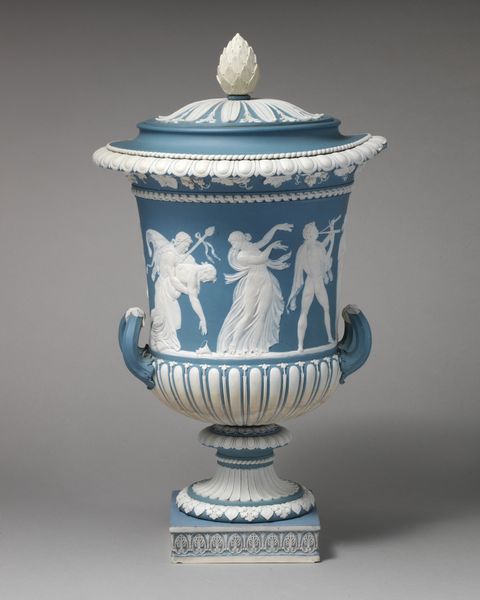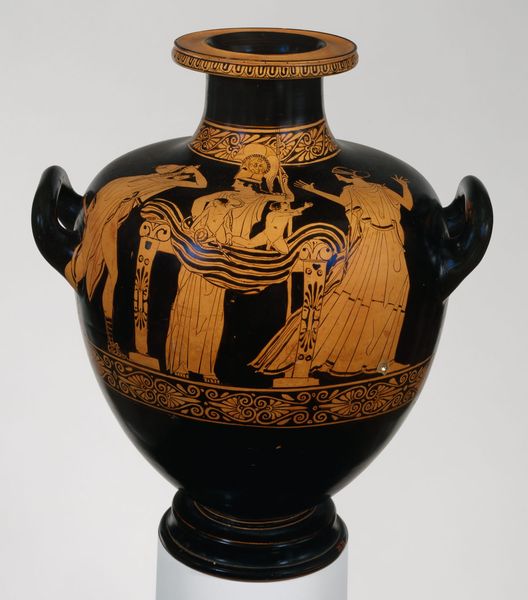
ceramic
#
portrait
#
neoclassicism
#
ceramic
#
vase
#
genre-painting
#
history-painting
Dimensions: H. 14 cm (5 1/2 in.)
Copyright: Public Domain
Curator: This “Vase” by Adam Buck, created around 1820, immediately draws me in with its detailed ceramic work and neoclassical imagery. What strikes you first? Editor: It’s smaller than I expected, almost delicate. The central image, the mother helping the child write, is quite touching, but the vase itself… it feels like there's more going on than just decoration. How do you interpret this work? Curator: For me, it's about understanding the material processes and the social context surrounding its creation. The rise of ceramics as a medium wasn't just about aesthetics; it reflected changing industrial production and consumer culture. This vase, mass-produced yet adorned with a hand-painted scene, embodies a tension between artistry and commodity. Do you see how it challenges notions of “high art”? Editor: I see your point! I hadn’t really thought of it that way before. So, the act of decorating the vase, essentially reproducing a painting on a ceramic form, speaks to accessibility and maybe even the democratizing of art? Curator: Exactly. The scene depicts domestic life, likely intended for a middle-class audience aspiring to portray themselves as educated and refined. Consider also the labor involved, the pottery workers, and the skilled artisans decorating each piece – often undervalued and overlooked. Are we celebrating the image alone, or the complex network of making? Editor: That's fascinating. Thinking about it in terms of production really opens it up. So much of art history focuses on the finished product. I will never look at porcelain the same way again! Curator: And perhaps, that understanding adds to our appreciation. It reminds us that art objects carry a rich narrative about the culture and economies that produce them.
Comments
No comments
Be the first to comment and join the conversation on the ultimate creative platform.
